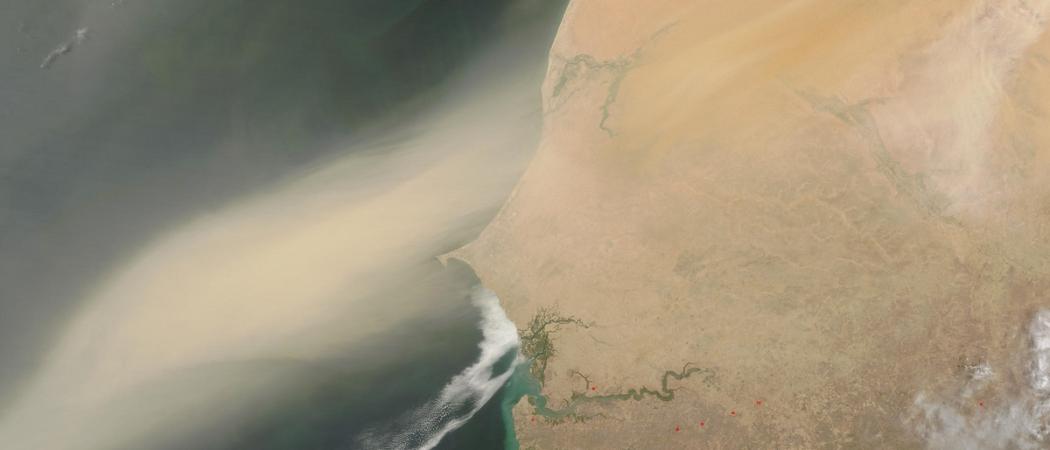
Photo: NASA
NASA has selected a sensor from the Jet Propulsion Laboratory with Science team that includes BSC researcher Carlos Pérez García-Pando to map the world's dust sources
The project, called EMIT, will determine the mineralogical composition of the world´s dust sources and contribute to constrain the effects of atmospheric dust aerosols upon climate
NASA has selected two proposals to develop small, space-based instruments that will tackle fundamental questions about our planet and its environment, such as why is the Arctic warming faster than the rest of the planet, or does mineral dust warm or cool the atmosphere? BSC researcher Carlos Pérez García-Pando is part of the Science team of one of these projects, EMIT (Earth Surface Mineral Dust Source Investigation), led by the Robert Green from the Jet Propulsion Laboratory (JPL). Pérez García-Pando is the head of the Atmospheric Composition group at BSC and holds an AXA Chair on Sand and Dust storms.
Does mineral dust warm or cool the atmosphere? That is one of the elusive fundamental questions motivating EMIT. Dust particles created by wind erosion of arid surfaces are amongst the largest contributors to the global aerosol mass load and dominate climate effects over large areas of the Earth. Dust particles are mixtures of different minerals, whose relative abundances, size, shape, surface topography and mixing state influence their effect upon climate. However, Earth system models that calculate climate effects poorly represent the regional variations in dust mineral composition. In this context, EMIT will mount an advanced imaging spectrometer to the exterior of the International Space Station to determine the mineral composition of dust sources that produce dust aerosols. By measuring in detail which minerals make up the dust, EMIT will help answering whether this type of aerosol warms or cools the atmosphere.
Pérez García-Pando´s role in EMIT will be to help constraining the emitted mineral sizes and fractions that result from the fragmentation of soil aggregates during wind erosion. In this sense, Pérez García-Pando has been recently awarded an ERC Consolidator Grant for his project FRAGMENT (Frontiers in dust mineralogical composition and its effects upon climate), which will allow him and his team to perform measurement campaigns in Spain, Morocco and the US to test theory that will ultimately contribute to the optimal use of the EMIT surface mineralogy datasets in Earth system models. FRAGMENT is aligned with and complementary to EMIT; it will combine theory, field measurements, laboratory analyses, remote spectroscopy and modelling to quantify the global mineralogical composition of dust and its effects upon climate.
This release was first published 6 March 2018 by the Barcelona Supercomputing Center.





 A unique international forum for public research organisations and companies to connect their external engagement with strategic interests around their R&D system.
A unique international forum for public research organisations and companies to connect their external engagement with strategic interests around their R&D system.